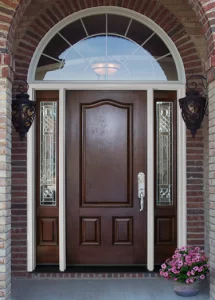The Garage Door Examination
The Garage Door Examination Like most things in our home, the garage door occasionally needs…
The Garage Door Examination
 Like most things in our home, the garage door occasionally needs some improvements and maintenance to keep it functioning properly. But because it is outside and often the last thing we think about when it comes to our homes, it is usually also the last thing on the list to be kept up on.
Like most things in our home, the garage door occasionally needs some improvements and maintenance to keep it functioning properly. But because it is outside and often the last thing we think about when it comes to our homes, it is usually also the last thing on the list to be kept up on.
A regular examination of the entire garage door system is recommended to keep your door working at optimal condition. Not only will this allow you to identify trouble spots ahead of time and potentially resolve them before they become a more costly problem, but it is a matter of safety. The garage door weighs in at over 300 pounds and is often used a few times each day for coming and going from the garage. Examinations help ensure that the door remains a safe apparatus for use by you and your family.
Many problems you will need a professional to troubleshoot, but the following things you can and should do annually yourself just to make sure everything checks out.
First and foremost, you want to test the emergency reverse system. This system comes as a requirement in all doors installed after 1993 when the government mandated these be added. Basically this stops and reverses the closing garage door should it detect something beneath it. This prevents crushing and maiming, as was somewhat common prior to this device being installed many years ago. How can you test it?
Simply take a wooden plank, a garbage can, or something similar and place it underneath the door and hit the remote. As the door closes it will hit the object and reverse. If it does not immediately reverse upon hitting the object you need to call in a professional for garage door service to have this repaired. The last thing you want to do is have that be a child under the closing door and it not reverse.
Next in the maintenance check list is a visual inspection of the springs that run across the door. These are what allow the door to open and close, rendering the 300 plus pounds of the door somewhat buoyant. There are two ways you can and should test the springs. First, make a visual inspection and see if you notice any signs of wear and tear. Close the door and look at the springs, do they look stretched out like a rubber band that has been pulled one too many times? If so, this is a sign that it is time to replace them.
The next step in your spring check is to pull the red safety cord dangling from the motor. This will allow you to manually lift the door, which you should do. Pull the door up to the halfway position and slowly let go of the door. If the door begins to drop then you know that your door and springs are unbalanced and are in need of repair. If however the door stays in place then everything checks out and you can reattach the opener system.
The last step in your maintenance procedure should be a visual inspection of the cables. These run from the springs you just checked down the length of the door. Look for any frayed or stressed cables. They are designed to last a long time but sometimes even the best cable will fray and snap, rendering your door inoperable.
If your inspection yields no poor results then you checked out for the year and should inspect again in 6 – 12 months. If however you notice some problems you should contact a professional soon and have repair work done.




